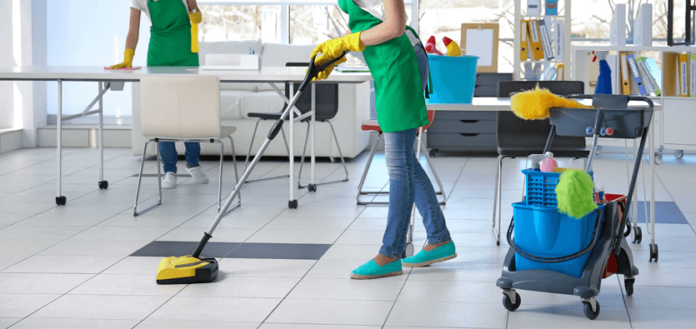An office needing janitorial cleaning will likely examine multiple bids before settling for the ideal candidate. If you’re planning to bid on such a task, you need a competitive estimate to land the job. How do you go about it?
Cleana Commercial Cleaning Sydney notes that there are various aspects you need to be aware of as you prepare your estimate. Let’s delve into some of the elements you need to factor into your bid.
Square footage
This factor defines the office space’s need for cleaning. If you have a measuring wheel, take the length and multiply it by the width. For instance, if a facility measures 50 feet by 20 feet, the square footage would be 1000 square feet.
Productivity Rate
What’s your crew’s cleaning rate? To find the time you need to clean, consider your productivity rate—the amount of time you can clean per hour. As such, divide the total square footage by the area you can cover in an hour to establish your time frame to complete the job. For example, if your hourly cleaning rate is 4000 square feet, and the total area is 20,000 square feet, it’ll take you 5 hours to complete the task.
Understanding your average productivity rate for different jobs can tell you how much labor you need for each task. But, the more complex a cleaning job is, the less productive you’re likely to be. Cleaning a high-traffic area in an industrial complex poses a high degree of difficulty, leading to low productivity.
Besides, your productivity rate lets you determine how your team performs compared to the competition. Take a practical approach to establish your rate by timing your crew on the job in diverse settings- low, medium, or high-density offices.
Online productivity rate charts come in handy if you need to make accurate comparisons. Establishing your average rate makes light work of determining the rough cost of a service before creating an estimate or bidding.
Hourly Rate
Hourly rates vary from region to region. Before settling for an hourly rate, do the legwork to establish what your competitors are charging in a particular area. If the competition in your area is high, you need to decide on a pricing structure in the middle range- not too high but lower than some of your competitors.
If need be, or if you’re new to the market, you can charge lower rates to gain traction quickly as you attract potential customers. But remember to assess your costs carefully, so you’re not on the losing end.
Type of Service
Janitorial services don’t provide a standardized approach to charging an account. Each job is unique, and the difficulty level often varies from one task to another.
But, some cleaning jobs might require you to charge a monthly rate or based on the square footage. The work needed to spruce up space also factors into the equation. For instance, if you need to strip a floor to wax it, your rates should be higher due to its difficulty level.
Some facilities might require specialized cleaning. For instance, you may need to use special tools and materials to clean a medical office or facility. In turn, you can charge higher hourly rates in your estimate.
Frequency
Frequency relates to the number of times you need to provide a cleaning service in a week. Consider lowering your hourly rate for spaces you need to tidy up more frequently to ensure you remain competitive.
Let’s suppose you intend to charge $30 per hour to spruce up an office once a week. If your frequency increases to five or four times a week, you might need to offer a lower hourly rate of $18 per hour to win the bid. Remember to consider your costs so you don’t get your fingers burnt.
Compute your Bid Estimate (Price)
Once you’ve tackled all the basics, you might consider using a trusty bidding calculator to determine if you’re on course for a profit. Typically, your bid price should be a product of your productivity, hourly rate, frequency, and the weeks in a given month. Thus, your formula might look like this:
Bid price = Time (productivity rate) x Hourly rate x Frequency x 4.29 (the number of weeks in a 30-day month).
Let’s use an example to determine your potential bid. Suppose you are bidding on a 10,000 square foot office. The space poses a low level of difficulty as there are a few areas to wipe down beside the low-traffic spots. Let’s say the office needs your services five times a week.
Considering that your average productivity for such a setup is 4,000, the time needed would be 2.5 hours, which is 10,000 divided by 4,000. You would perhaps charge $17 due to the higher frequency.
Now, your bid would be 2.5 x 17 x 5 x 4.29 = $911.6
The time it takes to clean an office is a critical part of the bidding process. Your team’s productivity is also a major determinant of your bid estimate. I hope this guideline eliminates the hassle of calculating your next bid. Otherwise, consider contacting a professional cleaning firm and searching for a reliable service provider.











